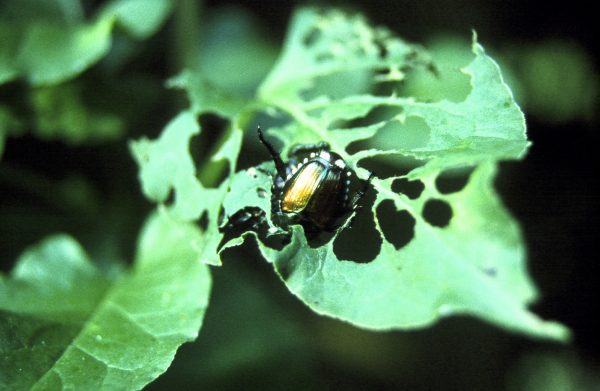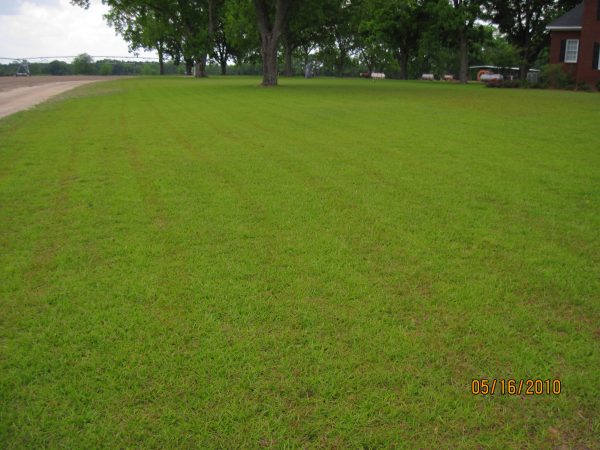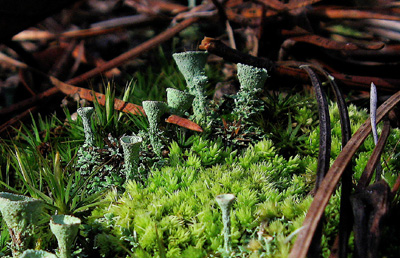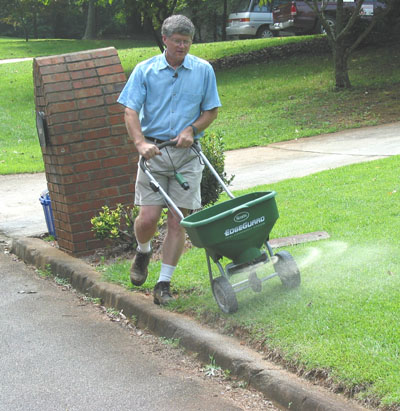How to Buy Fertilizer
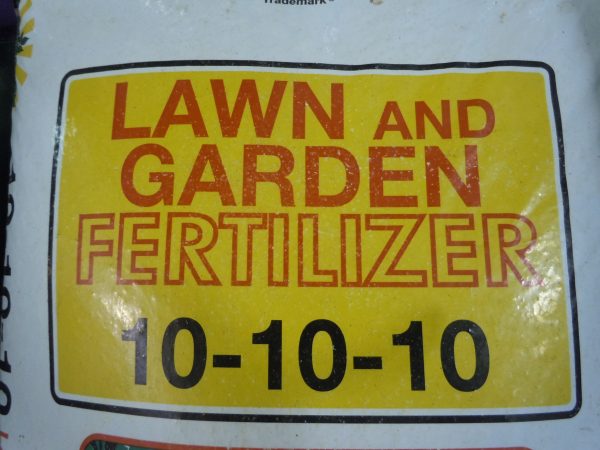
For a couple of years now, I have presented a talk entitled “You Can’t Get Any Lower Than Dirt!” to gardening groups in the Southeast. I talk about why organic matter is so important to your soil and why adding lime is one of the most important things you can do.
The highlight of the presentation (for me, anyway) is when I select an audience member to help me teach what the numbers on a fertilizer bag mean. As the volunteer nervously stands before the group, I deliver a cockamamie story about how he was once a ‘student’ of John Travolta. I proclaim that my victim is still a closet disco dancer and I invite him to assume the famous pose Travolta made famous in advertisements for “Saturday Night Fever”.
One finger in the air, hand clutching a Buzz Lightyear toy; one finger pointed downward, hand grasping an Energizer bunny; his knee encircled by a lace garter, my straight man vows never again to volunteer to help anyone.
Grateful that they were not selected, my audience chuckles as they learn that the numbers on a fertilizer bag stand for “Up – Down – All Around”. The pose of the hapless “disco dancer” rivets their attention to the rudiments of fertilizer knowledge.
Steve Viner, though, e-mailed me recently inquiring about the merits and uses of fast release versus slow release fertilizers. “I understand to use the quick release fertilizers per directions monthly through June.” he said. “But with slow release, how does one know how much and how often to fertilize shrubs?”
Although they cost a little more, I like slow-release fertilizers for some garden uses. Plants, like people, don’t need to eat one big meal and then starve for several days. Most slow-release fertilizers are manufactured with a coating on the particles. Water dissolves just a bit of the chemical inside each time it rains. Nearby plants are fed slowly, without shocking their system.
The “numbers” on slow-release products are typically twice (or more) higher in the nitrogen field (the first number on the bag). You can now purchase slow-release 18-6-12 and 29-3-4 fertilizers versus the old standby 10-10-10. The label will recommend an application rate approximately twice the rate that is normally recommended for 10-10-10 (i.e. 2 tbs./foot of height vs 1 tbs./ foot of height)
In other words, the slow-release products recommend applying a twice-as-concentrated chemical at twice the rate of 10-10-10. That gives an effective four months of fertilizing! The coating on the granules plus the chemical make-up of the nutrients allow the high rate to be applied only once a season without burning the plant roots.
AND NOW, SOME MATH MAGIC
You might wonder how fertilizer makers figure out how much fertilizer to apply to your lawn or landscape. Most outdoor plants need between three and six pounds of actual nitrogen per 1000 sq. feet of root area per year (lawns need more, trees need less). Notice the phrase actual nitrogen. It is supremely important because the numbers on fertilizer products vary so widely. A bag of 29-3-4 contains twenty nine percent actual nitrogen. A bag of 5-10-15 contains only five percent actual nitrogen.
Without going into the magic behind the numbers, you can easily figure out how much fertilizer to apply. Just divide the first number on a fertilizer bag into 100. The result is the number of pounds of that product you’ll need to supply one pound of actual nitrogen per 1000 square feet.
Example: for 10-10-10…….divide 10 into 100. The result is 10. Therefore, you need to apply 10 pounds of 10-10-10 to 1000 square feet monthly in order to apply 1 pound of actual nitrogen to that area during the height of the growing season (April – June). Magic!
Example: for 29-3-4……divide 29 into 100. The result is approximately 3. You need to apply 3 pounds of 29-3-3 to 1000 square feet in order to apply 1 pound of actual nitrogen to your lawn. Magic again!
Yes, the rates of the other two nutrients (phosphorus and potassium) in a fertilizer bag are important. If your soil is low in one or both, your plants will benefit if you correct the situation…but not as dramatically as applying the correct amount of nitrogen. Dr. Wayne Jordan, head of the Georgia Soil Testing laboratory, says that only thirty six percent of the samples he receives are low in phosphorus and only twenty one percent are low in potassium.
The best way to know which fertilizer to use and in what amount is to have your soil tested by a private lab or by the Soil Testing Laboratory, through your county Extension office.
FERTILIZERS – CONFUSED WHEN BUYING?
I recently saw a description of a fertilizer in a newspaper. It said that a 12 ounce bottle of the stuff provided the same level of nutrients as a 25 pound bag of 20-8-6! Intrigued by the narrative, I called the manufacturer of the product. A spokesperson said that the article had misquoted her, confusing their 5 gallon product with their smaller, homeowner product. That made sense to me because it is impossible for 12 ounces of fertilizer to equal 25 pounds of plant food. Later, I wondered how many other readers had gotten the opposite impression.
This leads me into a discussion of fertilizer claims in general. Master Gardeners and Extension agents all over Atlanta report a constant stream of questions about what is the “right” fertilizer for their roses or tomatoes or lawn grass. At garden centers homeowners find many competing brands of “Rose Fertilizer”, “Azalea Fertilizer”, “Tomato Fertilizer” and “Lawn Fertilizer”. Which is the correct choice?
The three nutrient numbers on the containers provide little help in determining which product is best for their plants. This confusing situation has been produced by marketers, seeking increased sales, not gardeners endeavoring to have healthier plants. Marketers and advertisers excel at creating “choices” for the gardener. While there are sometimes advantages offered by competing brands of fertilizer, great graphics do not make a good fertilizer product.
In my experience, plants do not read fancy labels. (BI) You (EI) read the labels and decide what to buy. So, how do you decide what will best feed your plants? You can give them what they need by remembering this simple phrase: “UP – DOWN – ALL AROUND”. In simple terms, the first number on a fertilizer bag promotes the growth of leaves (UP), the second number promotes roots (DOWN) and the third number promotes resistance to stress (ALL AROUND). If you intend to fertilize your lawn, look for a product that has a higher first number. From this, you know that a bag of 16-4-8 or 29-3-4 will keep your lawn green if you follow the application rate on the label.
Similarly, 6-8-8 or 18-29-6 work well as root-stimulating fertilizers. An additional benefit of a fertilizer having a high middle number is that flowering and seed production are also increased. Most “winterizer” fertilizers (22-3-16, etc) contain a high amount of the last number: the nutrient Potassium. Gardeners with heart problems know how important it is to monitor their potassium levels. Potassium helps plants maintain thick cell walls and to resist stress.
What fertilizers do I use? I keep bags of 16-4-8, 10-10-10 and 0-0-60 in my garden shed. With them I can feed almost all of my landscape plants. I also use slow-release fertilizer pellets (Osmocote, Sta-Green, DynaMite, etc.) for my annuals when I plant them. I find the water-soluble fertilizer liquids useful when I need to give nutrients to individual plants. My plants are happy and green and my pocketbook is thicker when I use these basic fertilizers.




